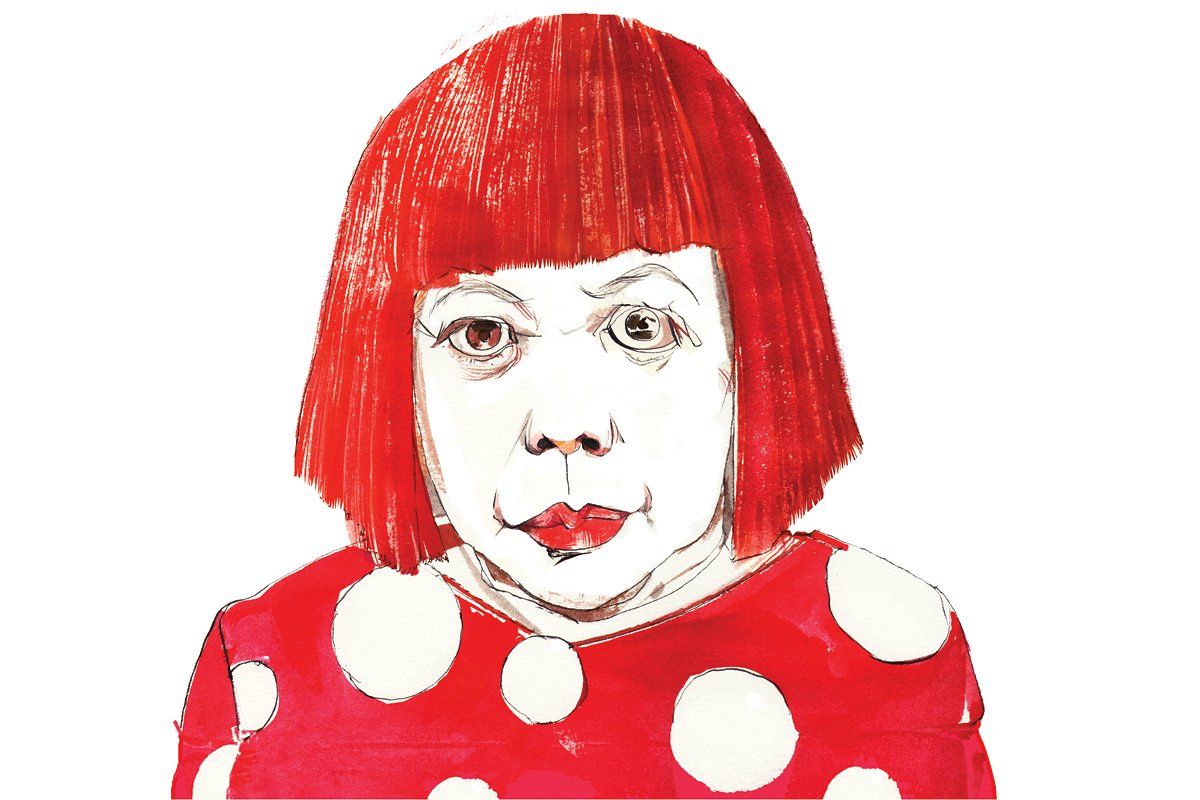
It never occurred to Yayoi Kusama that after more than 50 years as an avant-garde artist, she would at long last receive the international, admiring attention that always eluded her with the help of a few polka dot–covered handbags.
Kusama, 83, is the subject of a retrospective that opened in July at the Whitney Museum of American Art. But what is pushing her into the popular consciousness is her collaboration with Louis Vuitton, the exhibition's lead sponsor. Her work with creative director Marc Jacobs has resulted in a collection of polka-dotted accessories and frocks—as well as lavishly be-dotted store windows, celebratory dinners, cheering crowds, and all the fizzy affection an octogenarian artist can handle.
Kusama, who grew up in rural Japan, first entered the spotlight in the 1960s—a bold splash of psychedelia landing in a New York art milieu dominated by the likes of Roy Lichtenstein and Andy Warhol. "When I came here, I was working very hard, because I wanted to become a very important artist in the United States," Kusama says. "At that time, the United States was the top in the world, the most famous country, and many people came to New York to become artists." She established a reputation for art happenings choreographed with nude performers, soft-form penis sculptures, and dots.
Dots were her thing—beguiling, surreal, mysterious. The dots, she says in her accented English, are "my medicine—my personal medicine. From my childhood, I [saw] the polka dots ... [and] people talked about [my art with] the polka dots."
After some modest success, Kusama fled New York in the '70s, afflicted with mental illness. She returned to Japan and checked herself into a mental institution in Tokyo, where, by choice, she still resides.
For her triumphant return to New York, Kusama, a diminutive woman, wore a Technicolor red wig, a black dress splattered with red dots, polka-dot sunglasses, and myriad other dotted accessories from Vuitton. She has a reputation for being unreliable and inscrutable, but she can also be endearingly earnest. She is alternately admired for using art as a means to understanding her mental illness and accused of using mental illness to make her art that much more tantalizing.
Jacobs, an enthusiastic art collector, first met Kusama in 2006 during the filming of a documentary, when he visited Kusama in her Tokyo studio. Their affection for each other was obvious. "He is a genius," Kusama says.
In the 15 years Jacobs has been at Vuitton, he has collaborated with several influential artists, from Stephen Sprouse—who "tagged" designer bags—to Richard Prince and Takashi Murakami, who applied his candy-colored, cartoon sensibility to the Vuitton aesthetic. The collaboration sparked a dialogue about art, commercialism, and consumerism.
There is no obvious—or subtle—cultural message in Kusama's dots. They are an aesthetic gesture. But for the artist, the collaboration is both sweet satisfaction and a late-life challenge: "I think: I want to work harder and harder, and reach higher."
With Katie Baker in New York
Uncommon Knowledge
Newsweek is committed to challenging conventional wisdom and finding connections in the search for common ground.
Newsweek is committed to challenging conventional wisdom and finding connections in the search for common ground.





